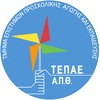Within current visual culture children are continuously exposed to varieties of visual messages accompanied by music which could contribute towards their aesthetic development. However, the interaction between music and image is not always as simple as in animation where music has direct relationship to the visual message to be easily interpreted by the preschool child. Taking a semiotic approach the current paper investigates preschool child’s reception of a more sophisticated interaction between music and visual messages, when the function of music is in mismatch to the visual message. The sample consists of 125 preschool children from Greece, divided into two groups that watched images with, and without, music. Their drawings, comments and explanations in response to our questions were presented as a form of personal interview, which provided rich material for qualitative observations, followed by statistical analysis. It appeared that, during the process of reception and within the specific context of the current investigation, it is the informative part of the visual message, and the child’s experiential relationship with it, that reinforces the receiver’s involvement more than the connotations transmitted by music.
(EL)
Within current visual culture children are continuously exposed to varieties of visual messages accompanied by music which could contribute towards their aesthetic development. However, the interaction between music and image is not always as simple as in animation where music has direct relationship to the visual message to be easily interpreted by the preschool child. Taking a semiotic approach the current paper investigates preschool child’s reception of a more sophisticated interaction between music and visual messages, when the function of music is in mismatch to the visual message. The sample consists of 125 preschool children fromGreece, divided into two groups that watched images with, and without, music. Their drawings, comments and explanations in response to our questions were presented as a form of personal interview, which provided rich material for qualitative observations, followed by statistical analysis. It appeared that, during the process of reception and within the specific context of the current investigation, it is the informative part of the visual message, and the child’s experiential relationship with it, that reinforces the receiver’s involvement more than the connotations transmitted by music.
(EN)

